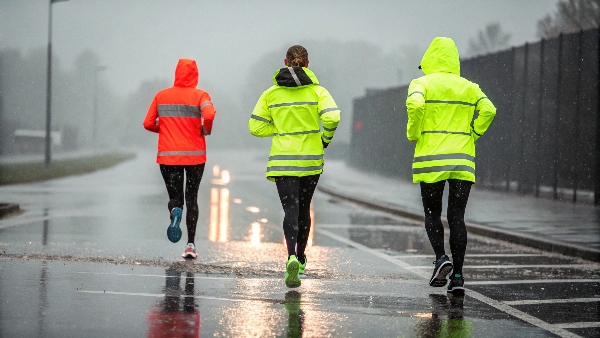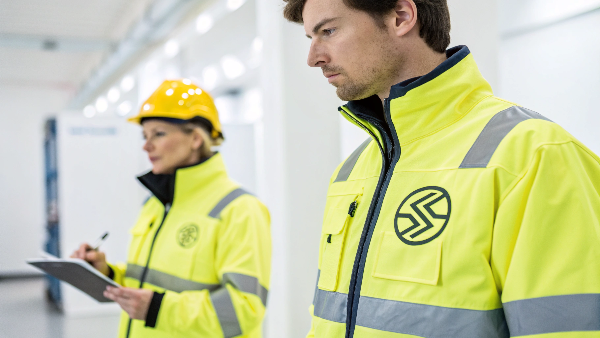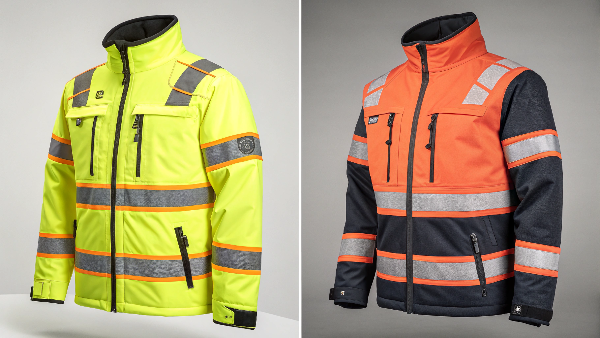Complete Breakdown of Reflective Fabric
In today’s fast-paced world, safety and visibility are more important than ever. Reflective fabric plays a crucial role in enhancing these aspects in various applications, from clothing and accessories to vehicles. This comprehensive guide explores the ins and outs of reflective material, its types, manufacturing process, and uses.
What’s the Meaning of Reflective Material?
Reflective material is designed to reflect light back to its source, increasing the visibility of the wearer or object it is applied to. It is commonly used in safety clothing, athletic wear, and casual wear to ensure visibility in low-light conditions.
Quality is paramount when it comes to reflective fabric. Reflective quality is assessed based on the end product, but certifications and seals from governing bodies are essential for ensuring trust, especially when sourcing from suppliers in China.
Reflective Fabric Standards and Certifications
Certifications and standards are critical in ensuring the quality and safety of reflective fabric. Here are the key certifications you should be aware of:
- EN ISO 20471: This international standard regulates high-visibility clothing, focusing on color, retroreflectivity, and placement of reflective fabric on the main garment.
- ANSI 107: The American National Standard Institute certification classifies high-visibility clothing into Performance Classes 1, 2, or 3 based on the amount of visible background and reflective fabric.
- ISO 6330: This standard specifies domestic washing procedures for reflective fabrics at 40℃, 60℃, or 90℃.
- ISO 15797: This standard is for industrial washing procedures, typically around 75℃.
- ISO 3175: It provides instructions for dry cleaning reflective materials.
- Oeko-Tex Standard 100: This certification tests for harmful substances in textile products.
- UL: Underwriter Laboratories provides safety certifications and standards for various products.
- BS EN 1150: This standard applies to high-visibility clothing, ensuring visibility under all weather and climatic conditions by combining fluorescent and reflective materials.
- CCC: The China Compulsory Certificate is a mandatory safety seal for imported items used in the Chinese market.
How Is Reflective Material Different from Reflective Sheeting?
Reflective material is typically used in safety clothing and attached by hot pressing or sewing, while reflective sheeting is used in safety signs, advertisements, license plates, and industrial signs and is applied using self-adhesive methods. The manufacturing processes for these two types of materials also differ significantly.
Reflective sheeting, for example, is often made by embedding glass beads into a PET film, followed by aluminum plating and the application of adhesive layers. This results in a material that can be easily applied to surfaces like road signs or construction barriers. On the other hand, reflective fabric involves embedding the glass beads directly onto the fabric, ensuring flexibility and comfort for wearable items.
How Is It Manufactured?
Reflective fabric is made using glass beads with a high refractive index. These beads are embedded in the fabric using electrostatic suction, which involves charging the glass beads so they adhere to the fabric. The beads are then coated with adhesive, dried, and undergo aluminum plating. The end product is a durable and highly reflective material.
Here's a step-by-step look at the manufacturing process:
- Bead Coating: Glass beads are mixed with adhesives to create a paste and coated onto the fabric.
- Electrostatic Suction: This technique uses an electric charge to embed the beads into the fabric.
- Heat Processing: The fabric undergoes heat processing to solidify the adhesive and beads.
- Reflective Layer Combination: The fabric is combined with a reflective layer and coated or printed as needed.
- Cutting and Finishing: The final product is cut to size and finished for use.
The combination of these steps results in a reflective fabric that is both flexible and durable, suitable for various applications from safety clothing to fashion items.
How Does Reflective Material Work?
Reflective material works by reflecting light that hits its surface back to its source. This is achieved through the glass beads embedded in the fabric, which reflect light at wider-than-normal angles. This principle is crucial for safety applications, particularly for nighttime visibility.
Light beams pass through the exterior surface of the glass beads and reflect off the mirrored surface of the beads, making the fabric appear to glow when light hits it. This material does not produce light on its own but relies on external light sources to enhance visibility.
Understanding the principle of reflectivity involves grasping the concept of the reflective coefficient, which measures the amount of light reflected by the material. High-quality reflective fabrics have a high reflective coefficient, ensuring that they are visible even in low-light conditions. This makes them ideal for safety applications where visibility is critical.
Types of Reflective Material
Reflective materials come in various types, each suited for specific applications. Here are some of the top types:
- High Luster Reflective Fabric: Used in high-visibility workwear with a reflective coefficient of over 400 cpl, made from 100% polyester or a polyester-cotton blend.
- High Reflective Fabric: Typically gray, made with glass bead technology and backed with polyester or a polyester-cotton blend.
- Ordinary Reflective Fabric: Basic reflectance, often certified by Oeko-Tex Standard 100.
- Flame Retardant Reflective Fabric: Fire-resistant, often NFPA 2112 certified, backed by Aramid or cotton.
- Reflective Heat Transfer Vinyl: Used in construction wear, bicyclist, and runner apparel, applied via heat transfer.
- Elastic Reflective Fabric: Stretchable, available in various colors, backed by spandex.
- Perforated Reflective Fabric: Enhanced breathability for hot conditions.
- Segmented Reflective Heat Transfer Vinyl: Cut into shapes for breathability and durability.
- PVC Reflective Tape: High-gloss tape in various colors for worker protection.
- Woven/Oxford Reflective Tape: Combines colored and silver-gray reflective tape.
- Reflective Thread: Used in vehicle seats, upholstery, and casual wear.
- Reflective Piping: Improves garment visibility, used in bags and clothing.
These types are tailored to meet different needs and applications, ensuring that there is a reflective material suitable for almost any scenario.
Uses and Benefits of Reflective Material
Reflective materials offer numerous benefits across various industries:
- Daytime Visibility: Enhances visibility in sunlight due to the glass beads on the fabric. This is particularly useful for outdoor workers and athletes.
- Nighttime Visibility: Crucial for reducing pedestrian accidents. Reflective materials ensure that wearers are visible to drivers and other individuals in low-light conditions.
- Traffic Safety: Ensures visibility in adverse weather conditions such as fog, rain, or snow. This makes it essential for road construction workers and emergency responders.
- First Responders: Easy identification in emergencies. Reflective materials help emergency personnel stand out in chaotic situations, ensuring they can be quickly identified.
- Hot Conditions: Reflects sunlight, providing shade and insulation. This is beneficial for workers who spend long hours under the sun.
- Flame Retardancy: Protects against fire-related accidents. Fire-resistant reflective materials are used in uniforms for firefighters and other professionals exposed to fire hazards.
- Water Repellant: Resistant to water damage. This makes reflective materials suitable for outdoor activities and environments where moisture is a concern.
- Wind Resistant: Provides insulation in windy conditions. Reflective fabrics can help keep wearers warm and protected from the wind.
- Fashion: Popular in activewear and sportswear for enhanced appearance. Reflective elements are often added to athletic clothing for both safety and style.
- Low Light Areas: Essential for workers in mines and tunnels. Reflective materials ensure that workers are visible even in the darkest environments.
- Solar Reflectance: Affects environmental temperature. Reflective materials can help manage heat by reflecting solar radiation.
- Agriculture: Prevents plant diseases. Reflective materials can be used to protect crops from pests and diseases.
- Grow Room: Enhances indoor plant light reflectance. Reflective materials are used to maximize the efficiency of grow lights in indoor farming.
- Advertising: Draws attention to logos and banners. Reflective materials make advertisements more visible and eye-catching, especially at night.
- Durability: Resistant to wind, water, and air damage. Reflective materials are long-lasting and can withstand harsh conditions.
- Vehicles: Improves automobile visibility. Reflective elements are used on vehicles to enhance visibility and safety.
- Pattern Reflectivity: Used in fashion applications. Reflective materials are incorporated into clothing designs for both safety and aesthetic purposes.
- Warning Signs: Defines traffic markers and construction safety. Reflective signs are crucial for guiding drivers and ensuring safety in construction zones.
- Body Stickers: Popular in car decals and body stickers. Reflective stickers are used to enhance the visibility of vehicles and personal items.
- Exercise on Open Roads: Ensures safety for joggers, marathoners, and cyclists. Reflective gear is essential for athletes training on roads and trails.
How to Find a Reliable Reflective Material Manufacturer
Finding a reliable reflective material manufacturer is crucial for ensuring product quality. Here’s a checklist to help you:
- Operating Years: Check the manufacturer’s experience and familiarity with the industry. A long-standing manufacturer is more likely to have the expertise and knowledge needed to produce high-quality reflective materials.
- Company Scale: Assess the production capacity and size of the factory. Larger manufacturers often have more resources and capabilities to meet your demands.
- Professionalism: Evaluate the manufacturer's interactions, subject knowledge, and negotiation skills. Professionalism is a key indicator of a reliable partner.
- Safety Standards: Look for certifications and seals of approval. These certifications ensure that the manufacturer complies with industry standards and regulations.
- Supplier Shortlist: Request samples from multiple suppliers. Comparing samples from different manufacturers can help you identify the best quality and value.
- Sample Assessment: Evaluate samples before placing an order. Testing samples for reflectivity, durability, and other qualities is essential to ensure you get what you need.
- Quality Control: Review the manufacturer’s production measures. A manufacturer with strict quality control processes is more likely to deliver consistent and reliable products.
- After-Sales Services: Ensure support in case of damaged products. Good after-sales service is crucial for addressing any issues that may arise with your order.
Bottom Line
Choosing the right manufacturer is crucial for ensuring high-quality reflective fabric. Understanding the manufacturing process, certifications, and types of reflective material can help you make informed decisions. At Vissafety, we offer top-quality reflective fabrics with over 10 production lines and extensive experience in the industry. Contact us today to learn more and get custom quotes for your needs.
For more information or inquiries, reach out to us at Ivy Xu or visit our website Vissafety. We are here to help you find the perfect reflective materials to meet your safety and visibility needs.
Reflective materials are more than just a safety feature; they are a vital part of many industries. By understanding the different types, how they are made, and their various applications, you can make the best choice for your specific needs. Whether you are looking for high-visibility clothing, reflective tape, or other reflective products, it is essential to choose a reliable manufacturer that meets all necessary standards and provides top-quality materials.



